Презентация Медкниги lekciya-metabolism-of-chromoproteids-and-biochemistry-of-the-liver 97e3b9e1308
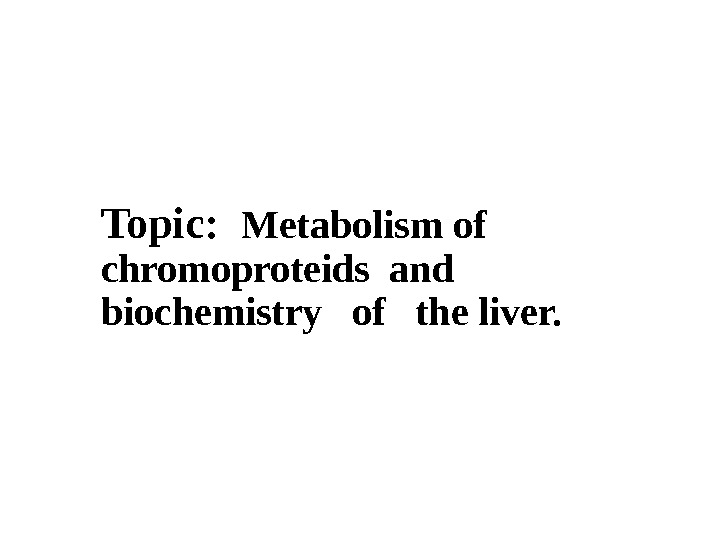
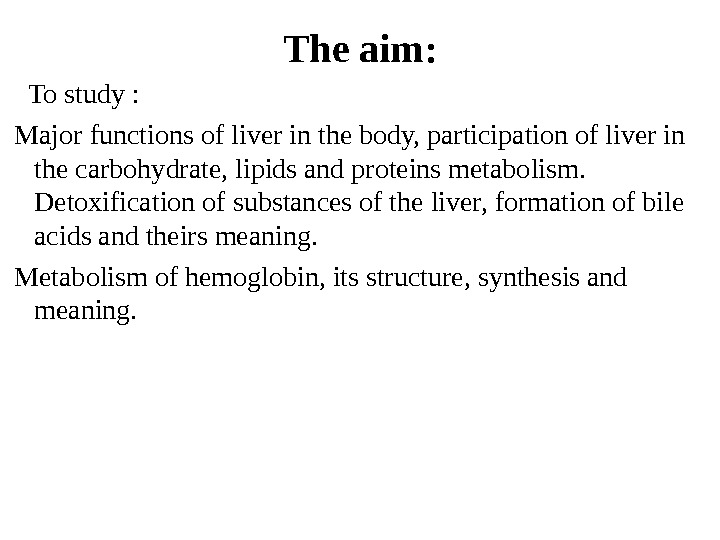


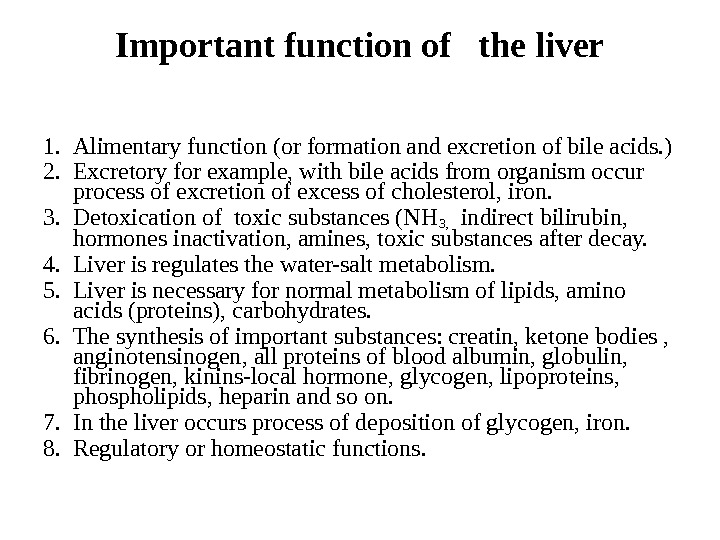
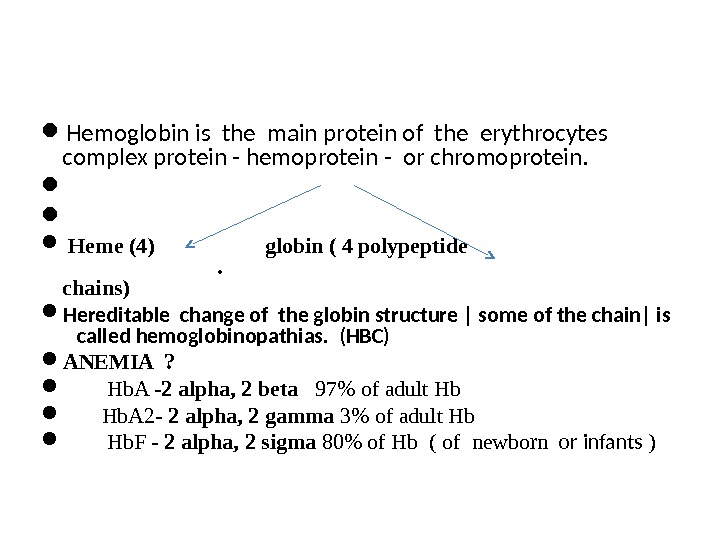
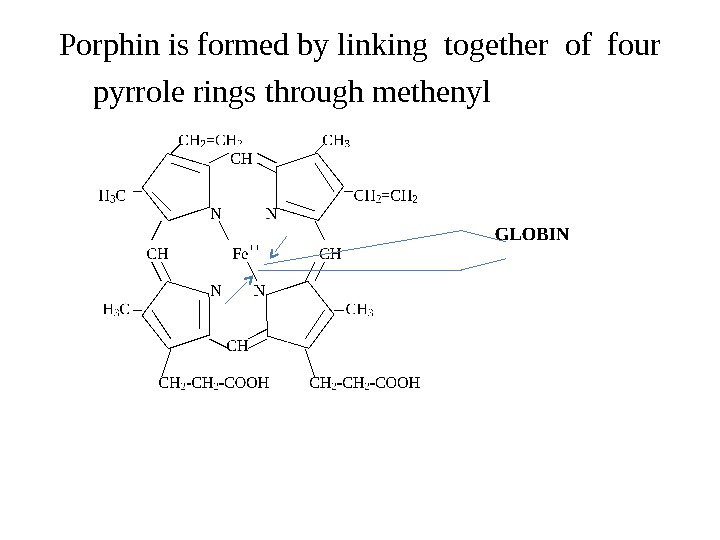
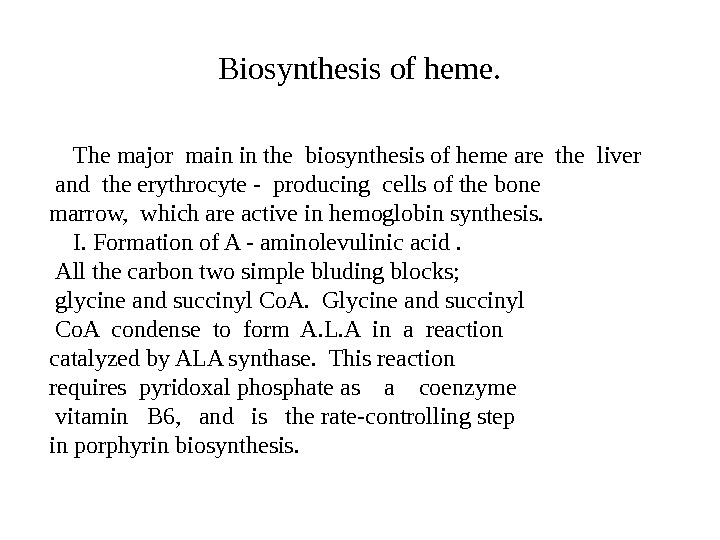
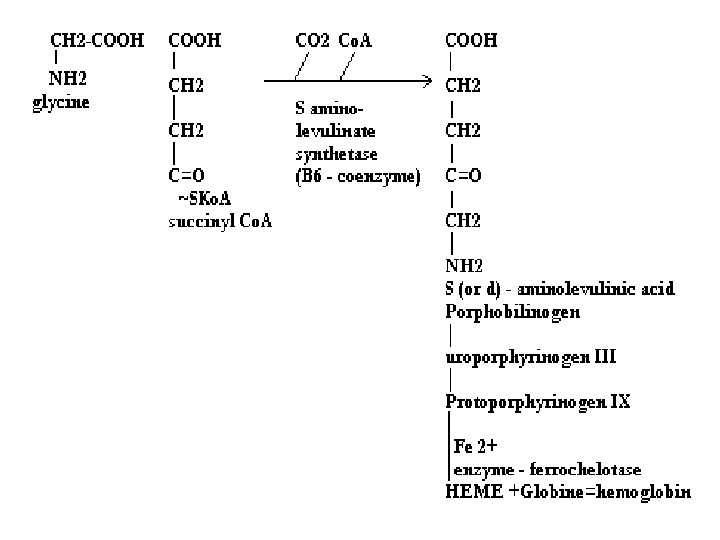
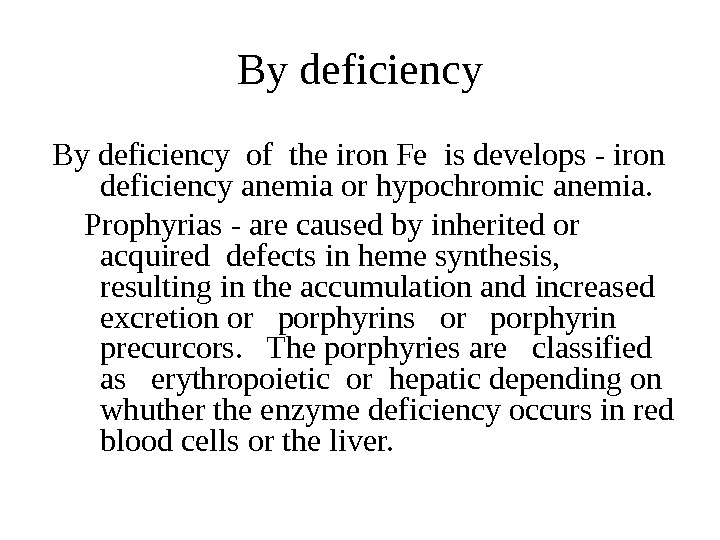
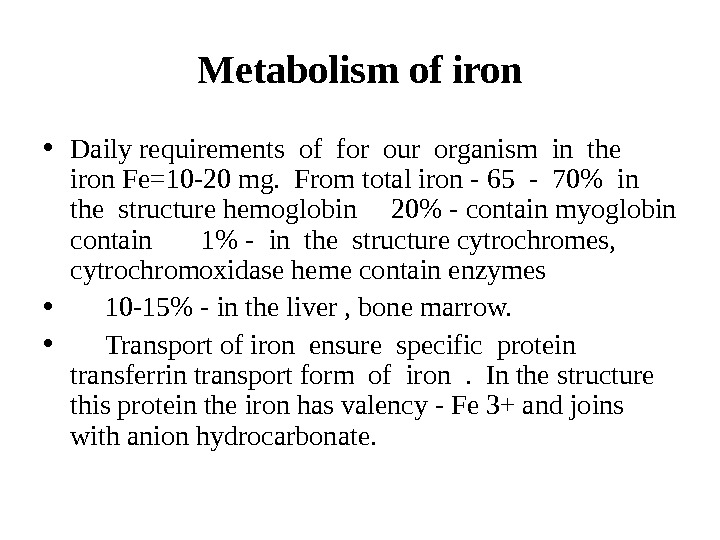
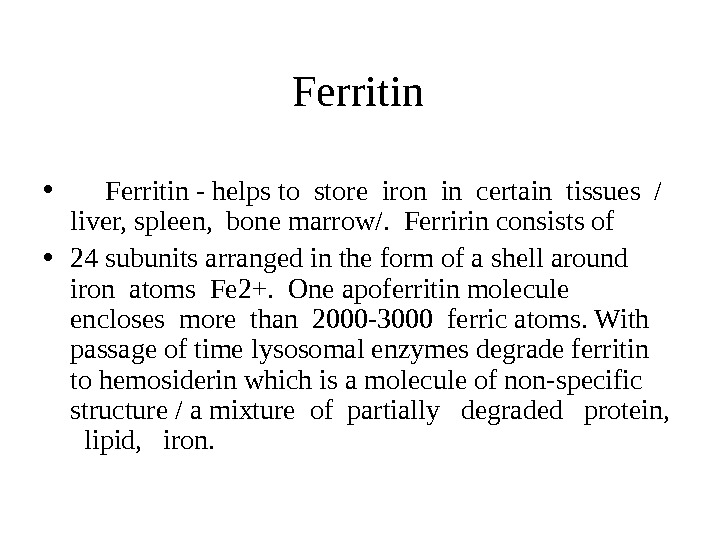
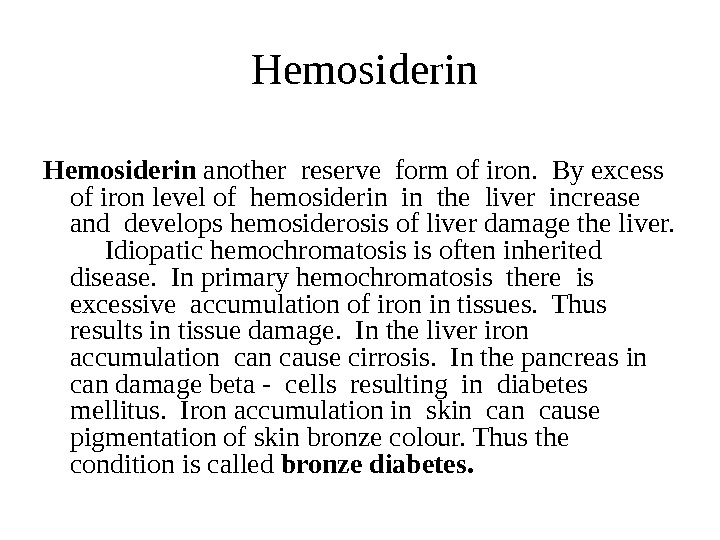

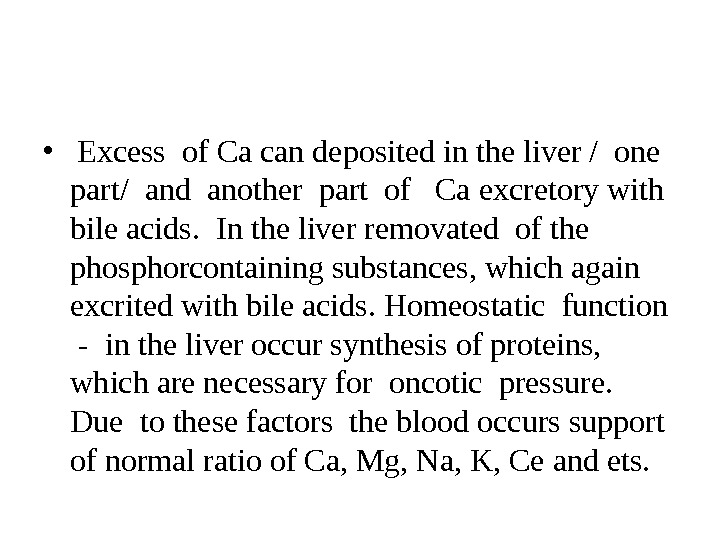
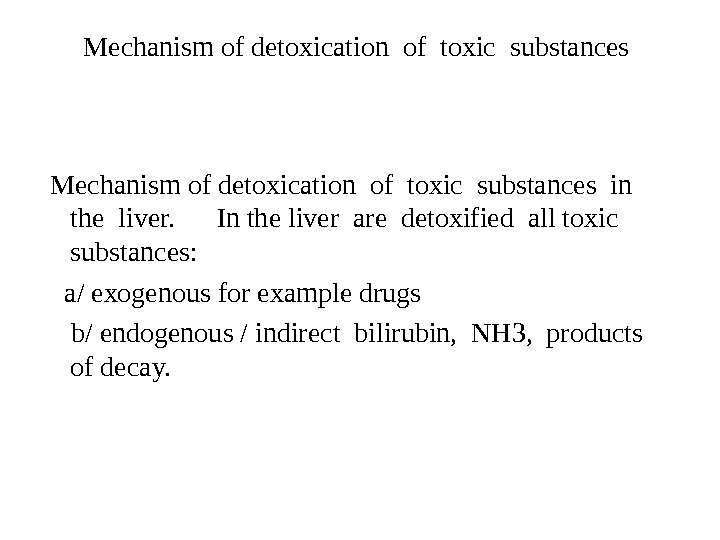

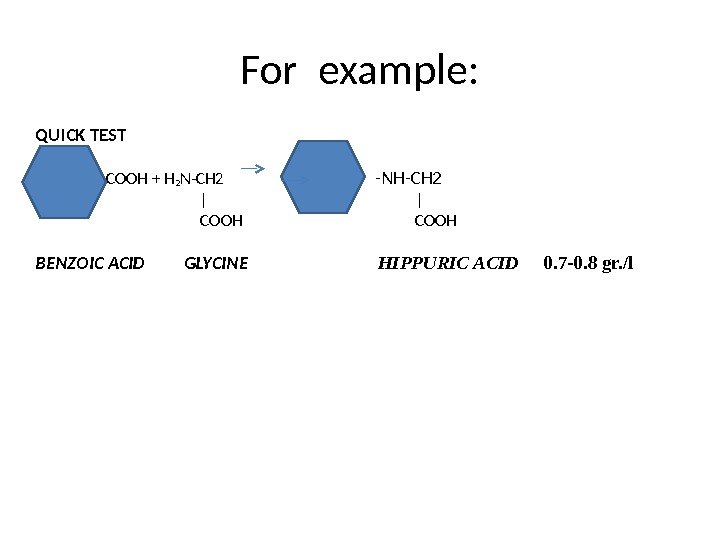

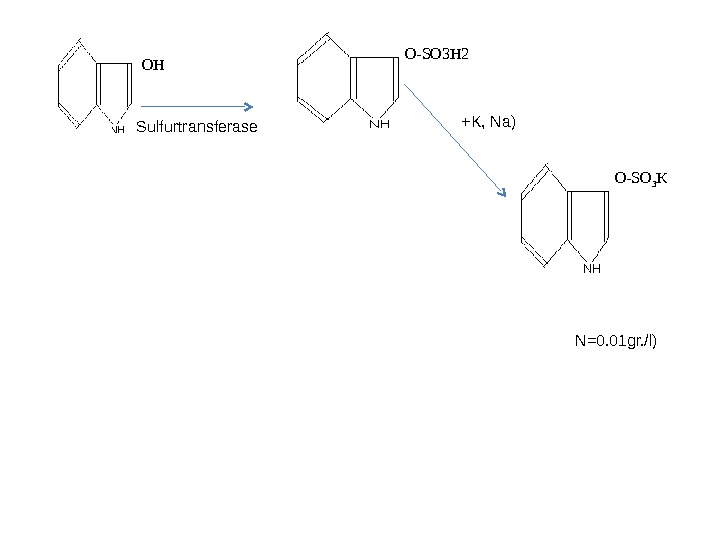
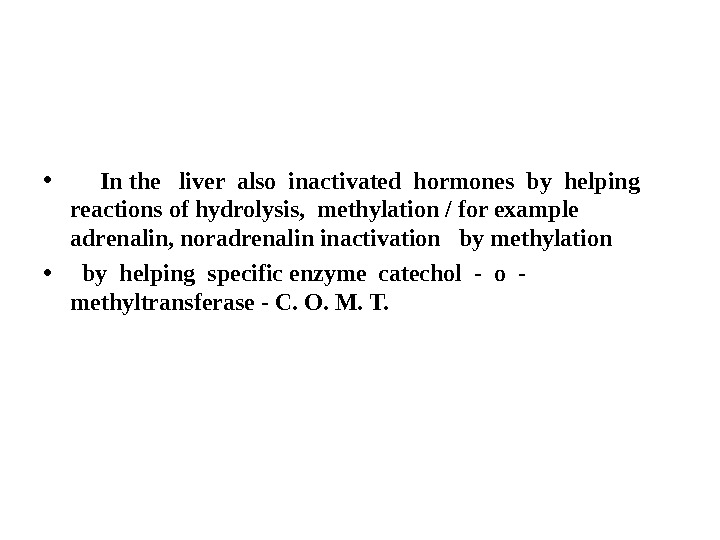


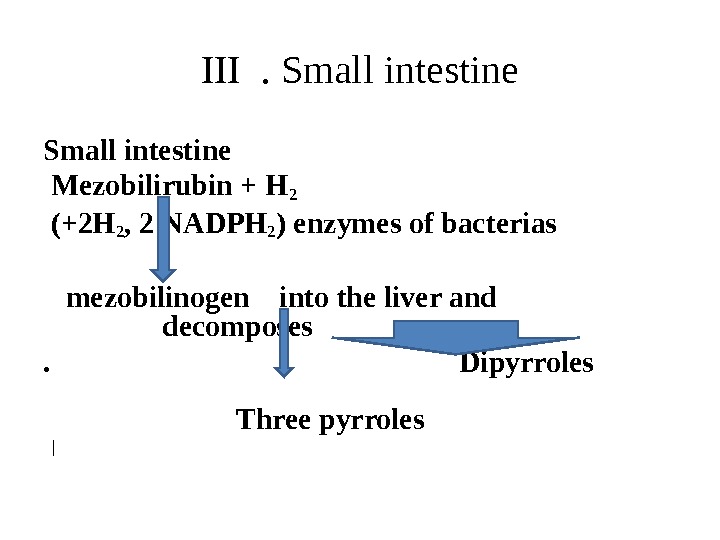
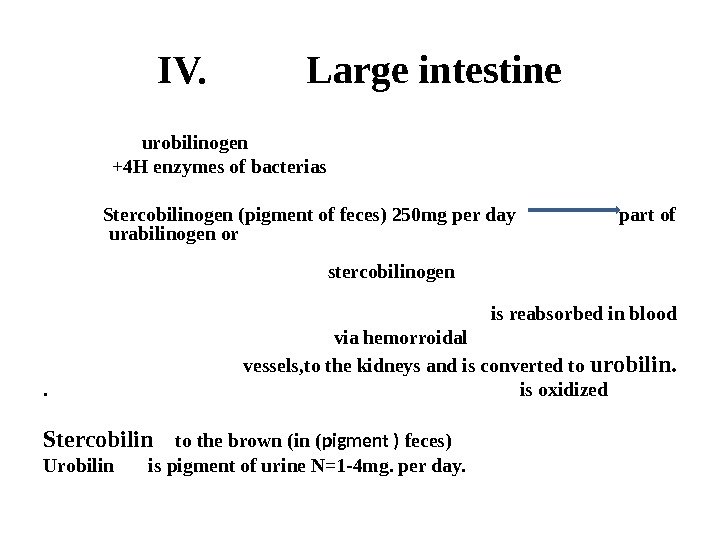
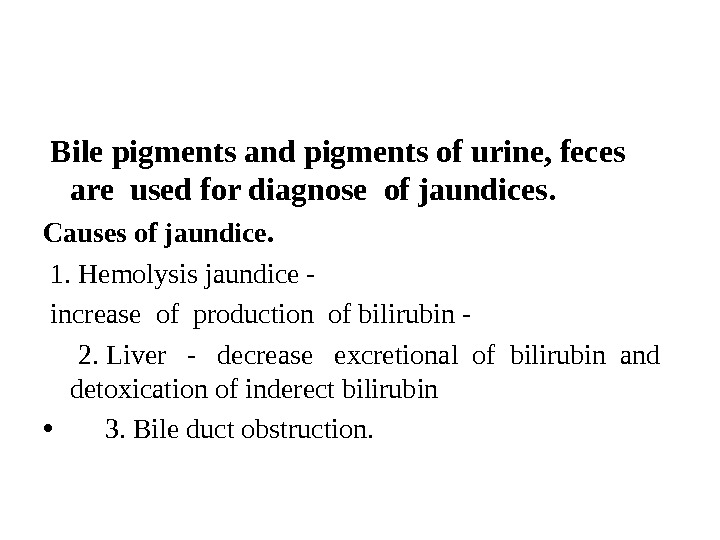
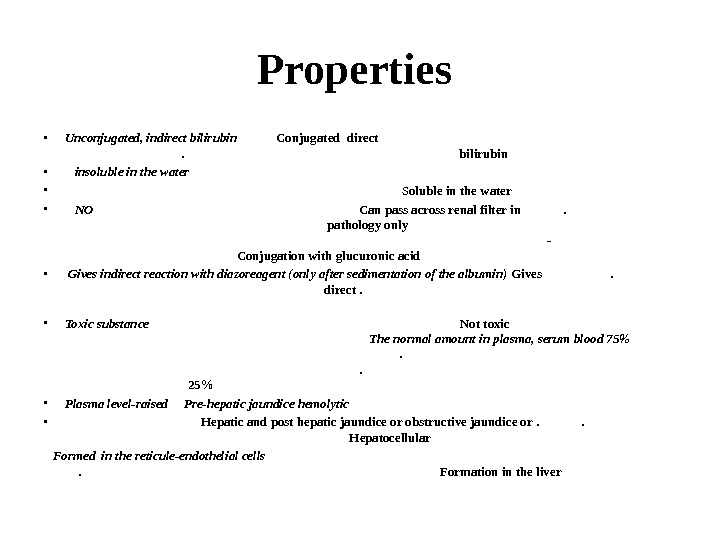
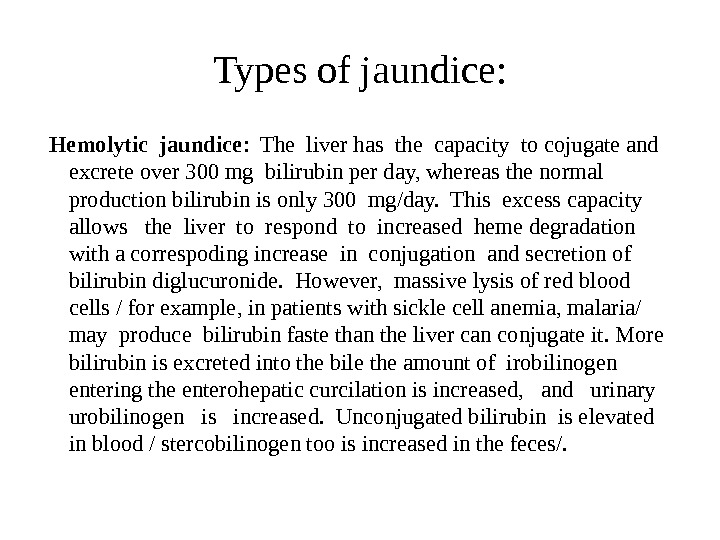
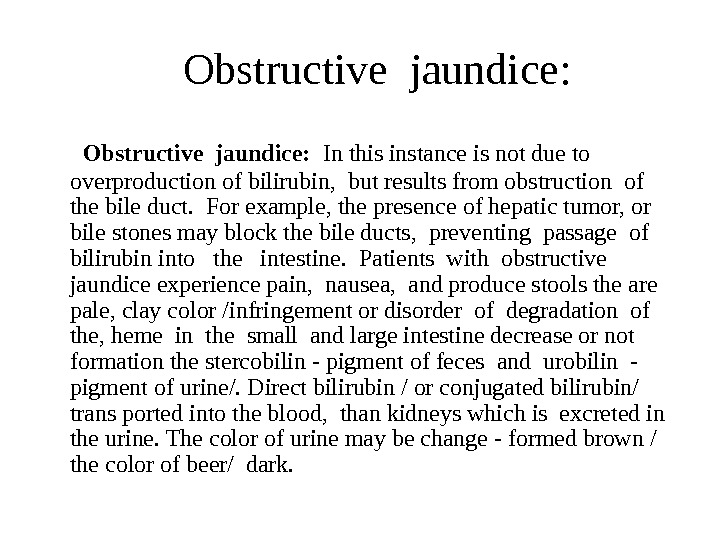
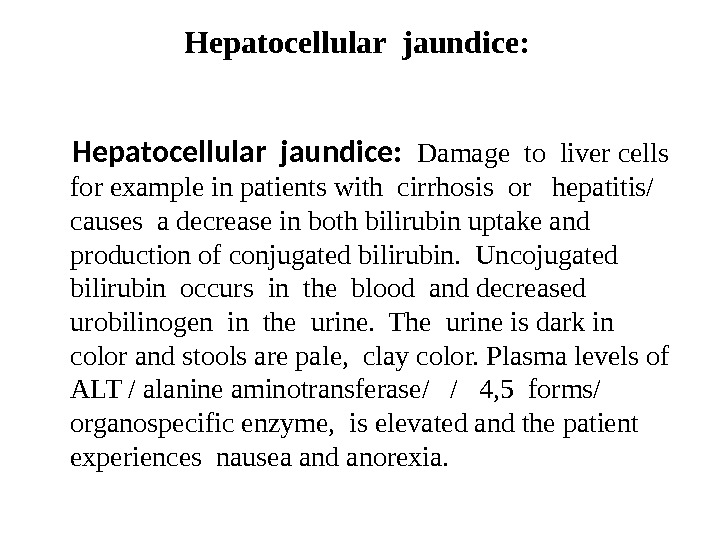
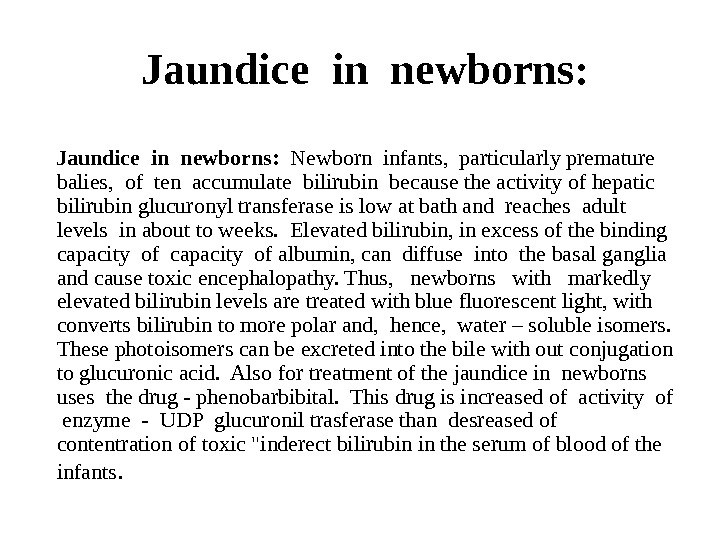
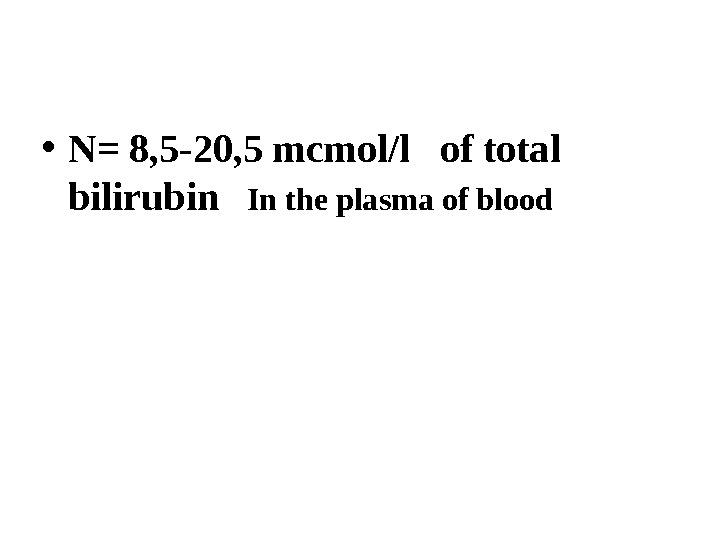
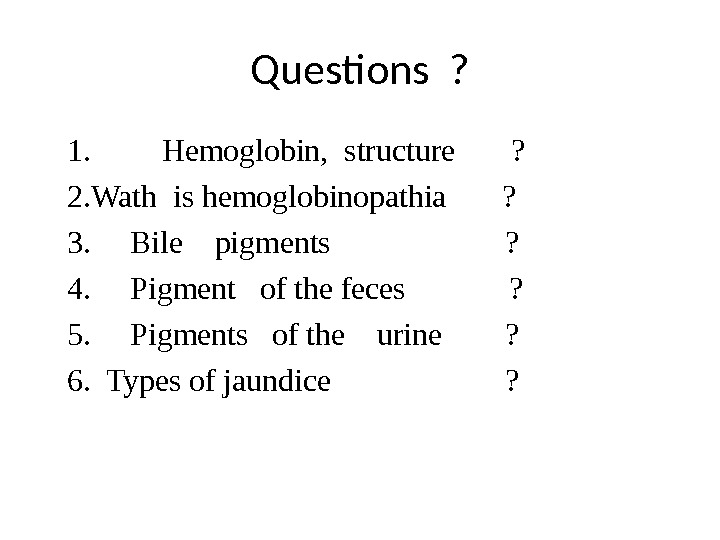

medknigi_lekciya-metabolism-of-chromoproteids-and-biochemistry-of-the-liver_97e3b9e1308.ppt
- Размер: 375 Кб
- Количество слайдов: 34
Описание презентации Презентация Медкниги lekciya-metabolism-of-chromoproteids-and-biochemistry-of-the-liver 97e3b9e1308 по слайдам
 Topic : Metabolism of chromoproteids and biochemistry of the liver.
Topic : Metabolism of chromoproteids and biochemistry of the liver.
 The aim: To study : Major functions of liver in the body, participation of liver in the carbohydrate, lipids and proteins metabolism. Detoxification of substances of the liver, formation of bile acids and theirs meaning. Metabolism of hemoglobin, its structure, synthesis and meaning.
The aim: To study : Major functions of liver in the body, participation of liver in the carbohydrate, lipids and proteins metabolism. Detoxification of substances of the liver, formation of bile acids and theirs meaning. Metabolism of hemoglobin, its structure, synthesis and meaning.
 Plan of the lecture 1. Important function of the liver 2. Chromoproteids of tissue. 3. Hemoglobin structure 4. Biosynthesis of heme 5. Metabolism of iron 6. Bile acids synthesis, significance 7. Mechanism of detoxication of toxic substances 8. The formation and fate of the bilirubin. 9. Causes of jaundice.
Plan of the lecture 1. Important function of the liver 2. Chromoproteids of tissue. 3. Hemoglobin structure 4. Biosynthesis of heme 5. Metabolism of iron 6. Bile acids synthesis, significance 7. Mechanism of detoxication of toxic substances 8. The formation and fate of the bilirubin. 9. Causes of jaundice.
 Chromoproteides • Chromoproteides are complex proteins the protein components and non protein components. The non protein components are called alson pigment / The word » chroma» from greek lanquage is mean paint or COLOUR. • In our organism are present: complex proteins — include Fe 2+ — cytochrome oxidase(heme), haemoglobin , mioglobin catalase, peroxidase, Cu 2+ — cytochrome oxidase, Zn 2+ — carbonic anhidrase, Mg 2+ hexokinase, piruvate kinase, glucose — 5 phosphase and etc.
Chromoproteides • Chromoproteides are complex proteins the protein components and non protein components. The non protein components are called alson pigment / The word » chroma» from greek lanquage is mean paint or COLOUR. • In our organism are present: complex proteins — include Fe 2+ — cytochrome oxidase(heme), haemoglobin , mioglobin catalase, peroxidase, Cu 2+ — cytochrome oxidase, Zn 2+ — carbonic anhidrase, Mg 2+ hexokinase, piruvate kinase, glucose — 5 phosphase and etc.
 Important function of the liver 1. Alimentary function (or formation and excretion of bile acids. ) 2. Excretory for example, with bile acids from organism occur process of excretion of excess of cholesterol, iron. 3. Detoxication of toxic substances (NH 3, indirect bilirubin, hormones inactivation, amines, toxic substances after decay. 4. Liver is regulates the water-salt metabolism. 5. Liver is necessary for normal metabolism of lipids, amino acids (proteins), carbohydrates. 6. The synthesis of important substances: creatin, ketone bodies , anginotensinogen, all proteins of blood albumin, globulin, fibrinogen, kinins-local hormone, glycogen, lipoproteins, phospholipids, heparin and so on. 7. In the liver occurs process of deposition of glycogen, iron. 8. Regulatory or homeostatic functions.
Important function of the liver 1. Alimentary function (or formation and excretion of bile acids. ) 2. Excretory for example, with bile acids from organism occur process of excretion of excess of cholesterol, iron. 3. Detoxication of toxic substances (NH 3, indirect bilirubin, hormones inactivation, amines, toxic substances after decay. 4. Liver is regulates the water-salt metabolism. 5. Liver is necessary for normal metabolism of lipids, amino acids (proteins), carbohydrates. 6. The synthesis of important substances: creatin, ketone bodies , anginotensinogen, all proteins of blood albumin, globulin, fibrinogen, kinins-local hormone, glycogen, lipoproteins, phospholipids, heparin and so on. 7. In the liver occurs process of deposition of glycogen, iron. 8. Regulatory or homeostatic functions.
 Hemoglobin is the main protein of the erythrocytes complex protein — hemoprotein — or chromoprotein. Heme (4) globin ( 4 polypeptide chains) Hereditable change of the globin structure | some of the chain| is called hemoglobinopathias. (HBC) ANEMIA ? Hb. A — 2 alpha, 2 beta 97% of adult Hb Hb. A 2 — 2 alpha, 2 gamma 3% of adult Hb Hb. F — 2 alpha, 2 sigma 80% of Hb ( of newborn or infants )
Hemoglobin is the main protein of the erythrocytes complex protein — hemoprotein — or chromoprotein. Heme (4) globin ( 4 polypeptide chains) Hereditable change of the globin structure | some of the chain| is called hemoglobinopathias. (HBC) ANEMIA ? Hb. A — 2 alpha, 2 beta 97% of adult Hb Hb. A 2 — 2 alpha, 2 gamma 3% of adult Hb Hb. F — 2 alpha, 2 sigma 80% of Hb ( of newborn or infants )
 Porphin is formed by linking together of four pyrrole rings through methenyl bridges.
Porphin is formed by linking together of four pyrrole rings through methenyl bridges.
 Biosynthesis of heme. The major main in the biosynthesis of heme are the liver and the erythrocyte — producing cells of the bone marrow, which are active in hemoglobin synthesis. I. Formation of A — aminolevulinic acid. All the carbon two simple bluding blocks; glycine and succinyl Co. A. Glycine and succinyl Co. A condense to form A. L. A in a reaction catalyzed by ALA synthase. This reaction requires pyridoxal phosphate as a coenzyme vitamin B 6, and is the rate-controlling step in porphyrin biosynthesis.
Biosynthesis of heme. The major main in the biosynthesis of heme are the liver and the erythrocyte — producing cells of the bone marrow, which are active in hemoglobin synthesis. I. Formation of A — aminolevulinic acid. All the carbon two simple bluding blocks; glycine and succinyl Co. A. Glycine and succinyl Co. A condense to form A. L. A in a reaction catalyzed by ALA synthase. This reaction requires pyridoxal phosphate as a coenzyme vitamin B 6, and is the rate-controlling step in porphyrin biosynthesis.

 By deficiency of the iron Fe is develops — iron deficiency anemia or hypochromic anemia. Prophyrias — are caused by inherited or acquired defects in heme synthesis, resulting in the accumulation and increased excretion or porphyrins or porphyrin precurcors. The porphyries are classified as erythropoietic or hepatic depending on whuther the enzyme deficiency occurs in red blood cells or the liver.
By deficiency of the iron Fe is develops — iron deficiency anemia or hypochromic anemia. Prophyrias — are caused by inherited or acquired defects in heme synthesis, resulting in the accumulation and increased excretion or porphyrins or porphyrin precurcors. The porphyries are classified as erythropoietic or hepatic depending on whuther the enzyme deficiency occurs in red blood cells or the liver.
 Metabolism of iron • Daily requirements of for our organism in the iron Fe=10 -20 mg. From total iron — 65 — 70% in the structure hemoglobin 20% — contain myoglobin contain 1% — in the structure cytrochromes, cytrochromoxidase heme contain enzymes • 10 -15% — in the liver , bone marrow. • Transport of iron ensure specific protein transferrin transport form of iron . In the structure this protein the iron has valency — Fe 3+ and joins with anion hydrocarbonate.
Metabolism of iron • Daily requirements of for our organism in the iron Fe=10 -20 mg. From total iron — 65 — 70% in the structure hemoglobin 20% — contain myoglobin contain 1% — in the structure cytrochromes, cytrochromoxidase heme contain enzymes • 10 -15% — in the liver , bone marrow. • Transport of iron ensure specific protein transferrin transport form of iron . In the structure this protein the iron has valency — Fe 3+ and joins with anion hydrocarbonate.
 Ferritin • Ferritin — helps to store iron in certain tissues / liver, spleen, bone marrow/. Ferririn consists of • 24 subunits arranged in the form of a shell around iron atoms Fe 2+. One apoferritin molecule encloses more than 2000 -3000 ferric atoms. With passage of time lysosomal enzymes degrade ferritin to hemosiderin which is a molecule of non-specific structure / a mixture of partially degraded protein, lipid, iron.
Ferritin • Ferritin — helps to store iron in certain tissues / liver, spleen, bone marrow/. Ferririn consists of • 24 subunits arranged in the form of a shell around iron atoms Fe 2+. One apoferritin molecule encloses more than 2000 -3000 ferric atoms. With passage of time lysosomal enzymes degrade ferritin to hemosiderin which is a molecule of non-specific structure / a mixture of partially degraded protein, lipid, iron.
 Hemosiderin another reserve form of iron. By excess of iron level of hemosiderin in the liver increase and develops hemosiderosis of liver damage the liver. Idiopatic hemochromatosis is often inherited disease. In primary hemochromatosis there is excessive accumulation of iron in tissues. Thus results in tissue damage. In the liver iron accumulation cause cirrosis. In the pancreas in can damage beta — cells resulting in diabetes mellitus. Iron accumulation in skin cause pigmentation of skin bronze colour. Thus the condition is called bronze diabetes.
Hemosiderin another reserve form of iron. By excess of iron level of hemosiderin in the liver increase and develops hemosiderosis of liver damage the liver. Idiopatic hemochromatosis is often inherited disease. In primary hemochromatosis there is excessive accumulation of iron in tissues. Thus results in tissue damage. In the liver iron accumulation cause cirrosis. In the pancreas in can damage beta — cells resulting in diabetes mellitus. Iron accumulation in skin cause pigmentation of skin bronze colour. Thus the condition is called bronze diabetes.
 Bile acids which synthesis Bile acids which synthesis in the liver are necessary for: — emulsification of lipids — absorption of fatty acids, vitamins / fat soluble A, D, E, K/, cholesterol — favour of formation of normal p. H in the small intestine — favour of solubibilization of cholesterol and ecxretion of from organism — favour of exretion with bile acids also bile pigments, matabolits of hormones, toxins, drugs, salts of Ca, Na, K, albumins, globulins. So excretory function connect with homeostatic function and regulation water — salt metabolism.
Bile acids which synthesis Bile acids which synthesis in the liver are necessary for: — emulsification of lipids — absorption of fatty acids, vitamins / fat soluble A, D, E, K/, cholesterol — favour of formation of normal p. H in the small intestine — favour of solubibilization of cholesterol and ecxretion of from organism — favour of exretion with bile acids also bile pigments, matabolits of hormones, toxins, drugs, salts of Ca, Na, K, albumins, globulins. So excretory function connect with homeostatic function and regulation water — salt metabolism.
 • Excess of Ca can deposited in the liver / one part/ and another part of Ca excretory with bile acids. In the liver removated of the phosphorcontaining substances, which again excrited with bile acids. Homeostatic function — in the liver occur synthesis of proteins, which are necessary for oncotic pressure. Due to these factors the blood occurs support of normal ratio of Ca, Mg, Na, K, Ce and ets.
• Excess of Ca can deposited in the liver / one part/ and another part of Ca excretory with bile acids. In the liver removated of the phosphorcontaining substances, which again excrited with bile acids. Homeostatic function — in the liver occur synthesis of proteins, which are necessary for oncotic pressure. Due to these factors the blood occurs support of normal ratio of Ca, Mg, Na, K, Ce and ets.
 Mechanism of detoxication of toxic substances in the liver. In the liver are detoxified all toxic substances: a/ exogenous for example drugs b/ endogenous / indirect bilirubin, NH 3, products of decay.
Mechanism of detoxication of toxic substances in the liver. In the liver are detoxified all toxic substances: a/ exogenous for example drugs b/ endogenous / indirect bilirubin, NH 3, products of decay.
 Mechanism of detoxication of toxic substances I. Chemical modification. First of all occurs the reactions of oxidation or + hydroxylation (OH), methylation (+CH 3), reduction (+H 2). . ets. II. Reaction of conjugation with glucuronic acid / G. A/ / active form is called UDPGA / or with sulfuric acid / active from is called P. A. P. S. / or with glutamine, glycine. After this formed not toxic and watersoluble substances which transported to the kidneys and excrited from our organism by urine.
Mechanism of detoxication of toxic substances I. Chemical modification. First of all occurs the reactions of oxidation or + hydroxylation (OH), methylation (+CH 3), reduction (+H 2). . ets. II. Reaction of conjugation with glucuronic acid / G. A/ / active form is called UDPGA / or with sulfuric acid / active from is called P. A. P. S. / or with glutamine, glycine. After this formed not toxic and watersoluble substances which transported to the kidneys and excrited from our organism by urine.
 For example: QUICK TEST -COOH + H 2 N-CH 2 С o -NH-CH 2 | COOH BENZOIC ACID GLYCINE HIPPURIC ACID 0. 7 -0. 8 gr. /l
For example: QUICK TEST -COOH + H 2 N-CH 2 С o -NH-CH 2 | COOH BENZOIC ACID GLYCINE HIPPURIC ACID 0. 7 -0. 8 gr. /l
 NADP HOH (O 2) NADPH 2 oxidation INDOLE INDOXYLHO
NADP HOH (O 2) NADPH 2 oxidation INDOLE INDOXYLHO
 PAPS OH Sulfurtransferase O-SO 3 H 2 O-SO 3 K( +K, Na) INDICAN INDOXYLULFATE INDOXYL ( N=0. 01 gr. /l)
PAPS OH Sulfurtransferase O-SO 3 H 2 O-SO 3 K( +K, Na) INDICAN INDOXYLULFATE INDOXYL ( N=0. 01 gr. /l)
 • In the liver also inactivated hormones by helping reactions of hydrolysis, methylation / for example adrenalin, noradrenalin inactivation by methylation • by helping specific enzyme catechol — o — methyltransferase — C. O. M. T.
• In the liver also inactivated hormones by helping reactions of hydrolysis, methylation / for example adrenalin, noradrenalin inactivation by methylation • by helping specific enzyme catechol — o — methyltransferase — C. O. M. T.
 . The formation and fate of the bilirubin. Catabolism of heme I . Reticulo-endotelial cells, system (R. E. S. ) particularly in the liver and spleen. NADPH 2 + O 2 -NADP R. E. C. hemoglobin(Hb) is converted — Verdoglobin-Fe+globin BILIVERDIN (pigment – green) | | NADPH 2 — NADP | biliverdin riducates BILIRUBIN (indirect – pigment with red-yellow color ) | Blood bilirubin + albumin (complex) is transported to the liver.
. The formation and fate of the bilirubin. Catabolism of heme I . Reticulo-endotelial cells, system (R. E. S. ) particularly in the liver and spleen. NADPH 2 + O 2 -NADP R. E. C. hemoglobin(Hb) is converted — Verdoglobin-Fe+globin BILIVERDIN (pigment – green) | | NADPH 2 — NADP | biliverdin riducates BILIRUBIN (indirect – pigment with red-yellow color ) | Blood bilirubin + albumin (complex) is transported to the liver.
 II. Liver “indirect” bilirubin (unconjugated) + 2 UDP glucuronic acid 2 UDP (bilirubin glucuronil transferase) detoxication of the bilirubin and is formed Bilirubin diglucuronide (direct bilirubin or conjugated bilirubin) bile pigment. it is not toxic substances. + bile acids
II. Liver “indirect” bilirubin (unconjugated) + 2 UDP glucuronic acid 2 UDP (bilirubin glucuronil transferase) detoxication of the bilirubin and is formed Bilirubin diglucuronide (direct bilirubin or conjugated bilirubin) bile pigment. it is not toxic substances. + bile acids
 III . Small intestine Mezobilirubin + H 2 (+2 H 2 , 2 NADPH 2 ) enzymes of bacterias mezobilinogen into the liver and decomposes. Dipyrroles Three pyrroles |
III . Small intestine Mezobilirubin + H 2 (+2 H 2 , 2 NADPH 2 ) enzymes of bacterias mezobilinogen into the liver and decomposes. Dipyrroles Three pyrroles |
 IV. Large intestine urobilinogen +4 H enzymes of bacterias Stercobilinogen (pigment of feces) 250 mg per day part of urabilinogen or stercobilinogen is reabsorbed in blood via hemorroidal vessels, to the kidneys and is converted to urobilin. . is oxidized Stercobilin to the brown (in ( pigment ) feces) Urobilin is pigment of urine N=1 -4 mg. per day.
IV. Large intestine urobilinogen +4 H enzymes of bacterias Stercobilinogen (pigment of feces) 250 mg per day part of urabilinogen or stercobilinogen is reabsorbed in blood via hemorroidal vessels, to the kidneys and is converted to urobilin. . is oxidized Stercobilin to the brown (in ( pigment ) feces) Urobilin is pigment of urine N=1 -4 mg. per day.
 Bile pigments and pigments of urine, feces are used for diagnose of jaundices. Causes of jaundice. 1. Hemolysis jaundice — increase of production of bilirubin — 2. Liver — decrease excretional of bilirubin and detoxication of inderect bilirubin • 3. Bile duct obstruction.
Bile pigments and pigments of urine, feces are used for diagnose of jaundices. Causes of jaundice. 1. Hemolysis jaundice — increase of production of bilirubin — 2. Liver — decrease excretional of bilirubin and detoxication of inderect bilirubin • 3. Bile duct obstruction.
 Propert ie s • Unconjugated, indirect bilirubin Conjugated direct bilirubin • insoluble in the water • Soluble in the water • NO Can pass across renal filter in . pathology only — Conjugation with glucuronic acid • Gives indirect reaction with diazoreagent (only after sedimentation of the albumin) Gives direct . • Toxic substance Not toxic The normal amount in plasma, serum blood 75% 25% • Plasma level-raised Pre-hepatic jaundice hemolytic • Hepatic and post hepatic jaundice or obstructive jaundice or. Hepatocellular Formed in the reticule-endothelial cells Formation in the liver
Propert ie s • Unconjugated, indirect bilirubin Conjugated direct bilirubin • insoluble in the water • Soluble in the water • NO Can pass across renal filter in . pathology only — Conjugation with glucuronic acid • Gives indirect reaction with diazoreagent (only after sedimentation of the albumin) Gives direct . • Toxic substance Not toxic The normal amount in plasma, serum blood 75% 25% • Plasma level-raised Pre-hepatic jaundice hemolytic • Hepatic and post hepatic jaundice or obstructive jaundice or. Hepatocellular Formed in the reticule-endothelial cells Formation in the liver
 Types of j a undice: Hemolytic jaundice : The liver has the capacity to cojugate and excrete over 300 mg bilirubin per day, whereas the normal production bilirubin is only 300 mg/day. This excess capacity allows the liver to respond to increased heme degradation with a correspoding increase in conjugation and secretion of bilirubin diglucuronide. However, massive lysis of red blood cells / for example, in patients with sickle cell anemia, malaria/ may produce bilirubin faste than the liver can conjugate it. More bilirubin is excreted into the bile the amount of irobilinogen entering the enterohepatic curcilation is increased, and urinary urobilinogen is increased. Unconjugated bilirubin is elevated in blood / stercobilinogen too is increased in the feces/.
Types of j a undice: Hemolytic jaundice : The liver has the capacity to cojugate and excrete over 300 mg bilirubin per day, whereas the normal production bilirubin is only 300 mg/day. This excess capacity allows the liver to respond to increased heme degradation with a correspoding increase in conjugation and secretion of bilirubin diglucuronide. However, massive lysis of red blood cells / for example, in patients with sickle cell anemia, malaria/ may produce bilirubin faste than the liver can conjugate it. More bilirubin is excreted into the bile the amount of irobilinogen entering the enterohepatic curcilation is increased, and urinary urobilinogen is increased. Unconjugated bilirubin is elevated in blood / stercobilinogen too is increased in the feces/.
 B Obstructive jaundice: B. Obstructive jaundice: In this instance is not due to overproduction of bilirubin, but results from obstruction of the bile duct. For example, the presence of hepatic tumor, or bile stones may block the bile ducts, preventing passage of bilirubin into the intestine. Patients with obstructive jaundice experience pain, nausea, and produce stools the are pale, clay color /infringement or disorder of degradation of the, heme in the small and large intestine decrease or not formation the stercobilin — pigment of feces and urobilin — pigment of urine/. Direct bilirubin / or conjugated bilirubin/ trans ported into the blood, than kidneys which is excreted in the urine. The color of urine may be change — formed brown / the color of beer/ dark.
B Obstructive jaundice: B. Obstructive jaundice: In this instance is not due to overproduction of bilirubin, but results from obstruction of the bile duct. For example, the presence of hepatic tumor, or bile stones may block the bile ducts, preventing passage of bilirubin into the intestine. Patients with obstructive jaundice experience pain, nausea, and produce stools the are pale, clay color /infringement or disorder of degradation of the, heme in the small and large intestine decrease or not formation the stercobilin — pigment of feces and urobilin — pigment of urine/. Direct bilirubin / or conjugated bilirubin/ trans ported into the blood, than kidneys which is excreted in the urine. The color of urine may be change — formed brown / the color of beer/ dark.
 Hepatocellular jaundice: Damage to liver cells for example in patients with cirrhosis or hepatitis/ causes a decrease in both bilirubin uptake and production of conjugated bilirubin. Uncojugated bilirubin occurs in the blood and decreased urobilinogen in the urine. The urine is dark in color and stools are pale, clay color. Plasma levels of ALT / alanine aminotransferase/ / 4, 5 forms/ organospecific enzyme, is elevated and the patient experiences nausea and anorexia.
Hepatocellular jaundice: Damage to liver cells for example in patients with cirrhosis or hepatitis/ causes a decrease in both bilirubin uptake and production of conjugated bilirubin. Uncojugated bilirubin occurs in the blood and decreased urobilinogen in the urine. The urine is dark in color and stools are pale, clay color. Plasma levels of ALT / alanine aminotransferase/ / 4, 5 forms/ organospecific enzyme, is elevated and the patient experiences nausea and anorexia.
 Jaundice in newborns: 2. Jaundice in newborns: Newborn infants, particularly premature balies, of ten accumulate bilirubin because the activity of hepatic bilirubin glucuronyl transferase is low at bath and reaches adult levels in about to weeks. Elevated bilirubin, in excess of the binding capacity of albumin, can diffuse into the basal ganglia and cause toxic encephalopathy. Thus, newborns with markedly elevated bilirubin levels are treated with blue fluorescent light, with converts bilirubin to more polar and, hence, water – soluble isomers. These photoisomers can be excreted into the bile with out conjugation to glucuronic acid. Also for treatment of the jaundice in newborns uses the drug — phenobarbibital. This drug is increased of activity of enzyme — UDP glucuronil trasferase than desreased of contentration of toxic «inderect bilirubin in the serum of blood of the infants.
Jaundice in newborns: 2. Jaundice in newborns: Newborn infants, particularly premature balies, of ten accumulate bilirubin because the activity of hepatic bilirubin glucuronyl transferase is low at bath and reaches adult levels in about to weeks. Elevated bilirubin, in excess of the binding capacity of albumin, can diffuse into the basal ganglia and cause toxic encephalopathy. Thus, newborns with markedly elevated bilirubin levels are treated with blue fluorescent light, with converts bilirubin to more polar and, hence, water – soluble isomers. These photoisomers can be excreted into the bile with out conjugation to glucuronic acid. Also for treatment of the jaundice in newborns uses the drug — phenobarbibital. This drug is increased of activity of enzyme — UDP glucuronil trasferase than desreased of contentration of toxic «inderect bilirubin in the serum of blood of the infants.
 • N= 8, 5 -20, 5 mcmol/l of total bilirubin In the plasma of blood
• N= 8, 5 -20, 5 mcmol/l of total bilirubin In the plasma of blood
 Questions ? 1. Hemoglobin, structure ? 2. Wath is hemoglobinopathia ? 3. Bile pigments ? 4. Pigment of the feces ? 5. Pigments of the urine ? 6. Types of jaundice ?
Questions ? 1. Hemoglobin, structure ? 2. Wath is hemoglobinopathia ? 3. Bile pigments ? 4. Pigment of the feces ? 5. Pigments of the urine ? 6. Types of jaundice ?
 THANKS FOR ATTENTION !!!
THANKS FOR ATTENTION !!!
